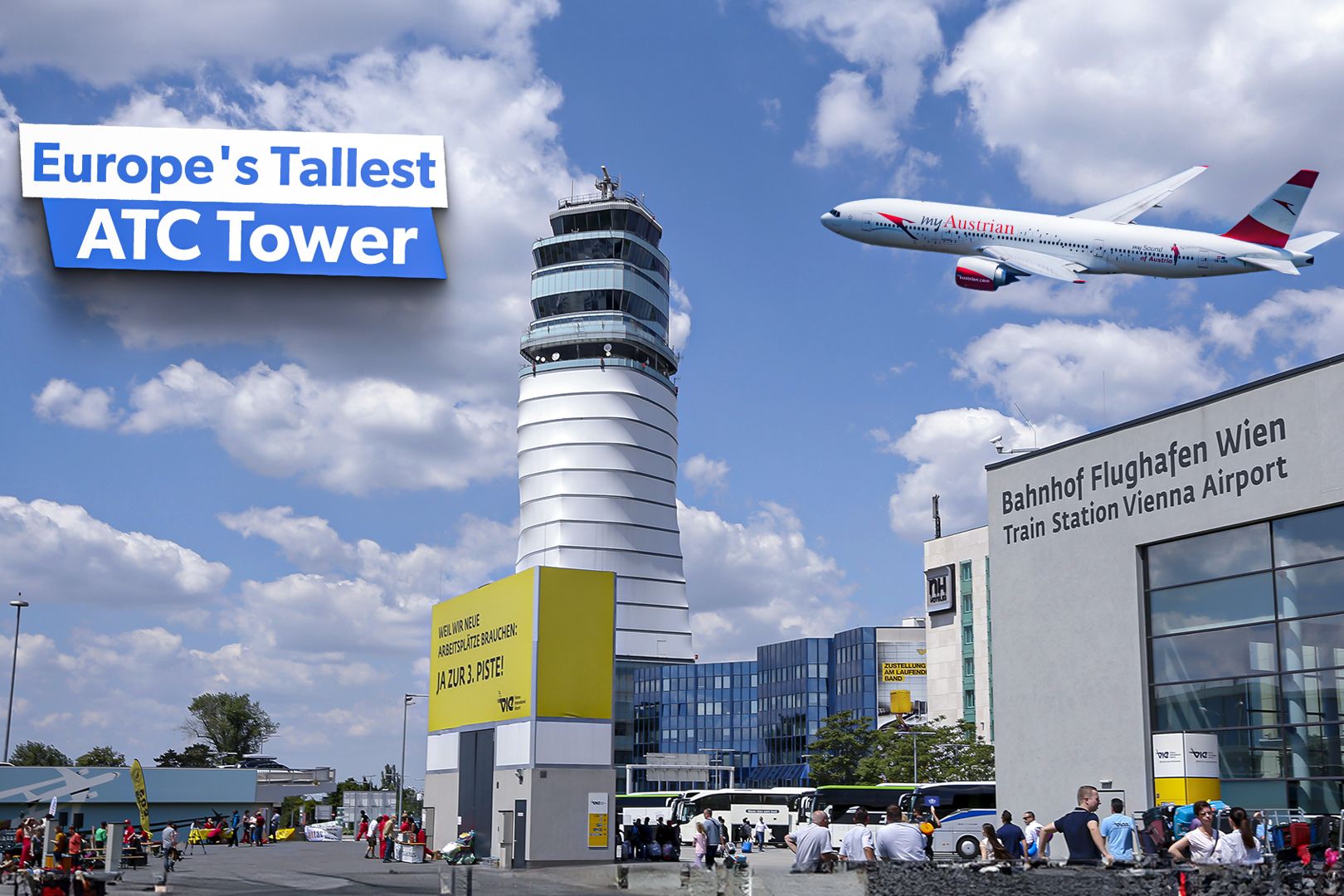Summary Vienna Airport houses Europe's tallest control tower at 109 meters, a symbol of modern engineering. The tower by Zechner & Zechner offers a controlled view, tech integration, and futuristic design. Part of the Skylink Project, the tower symbolizes Vienna's commitment to aviation excellence.
Vienna International Airport, known for its architectural grandeur and strategic importance, is home to one of the world's most remarkable air traffic control towers. According to Private Jet Charter , the tower, measuring 109 meters, is the tallest in Europe and the third highest globally, a testament to modern engineering and design excellence. This article explores this unique structure's design, functionality, and significance.

What about Vienna airport? Vienna International Airport, located just 18 kilometers from the city center near Schwechat, is Austria's busiest airport and a key European hub, and one of the most punctual airports worldwide. It started in 1938 as a military base but has grown into a bustling gateway for over 20 million passengers yearly. This daily service was previously operated with a Boeing 777 aircraft.
The airport is well-equipped with two runways and a sleek main terminal, including the modern Skylink extension that boosts capacity and efficiency. Known for its innovative design, the airport boasts Europe's tallest air traffic control tower, a standout feature highlighting Vienna's forward-thinking approach to aviation. Architectural Marvel According to Architonic , the tower is designed by the Viennese architectural firm Zechner & Zechner, the Vienna Airport Control Tower was completed in 2006 as part of a comprehensive expansion plan for the airport.
The tower's distinctive feature is its slight tilt, an intentional design choice that gives the illusion of leaning when viewed from certain angles. This design provides an optimal view of the airfield and makes the tower a landmark visible from various parts of the surrounding region. The architectural concept behind the tower is deeply rooted in the idea of creating a symbolic structure.
The tower's base, integrated into an office block, aligns with the building lines of the adjacent streets, giving it a high-rise appearance rather than that of a typical control tower. This integration is emphasized by a lowered terrace, making the structure blend seamlessly with its urban environment. The low-cost carrier is hopeful of decent load factors this summer season.
A functional design The Vienna Airport Control Tower is more than just an architectural marvel; it is a hub of technological sophistication and operational efficiency. At its apex, the tower houses eight workstations for air traffic controllers, providing a 360-degree view of the airfield and its surroundings. Below the control room is an emergency level, usually used by aviation weather observers but available for controllers if needed.
The tower also includes a level dedicated to movement control, which directs taxiing aircraft. The base of the tower is designed to accommodate controllers who manage air traffic within the airport's surrounding airspace, referred to as the 'Vienna Approach'. This separation of duties ensures that each controller can focus on specific tasks, enhancing overall efficiency and safety.
Additionally, the tower includes facilities for computer systems, antennae, radar equipment, and office spaces. Have you ever been to Vienna? What do you think of its intrensic design? Tell us in the comments! Technological integration Modern airports require advanced technology to manage the increasing volume of air traffic. The Vienna Airport Control Tower has state-of-the-art systems supporting its operational needs.
Integrating these systems helps maintain high standards of safety and efficiency, crucial for one of Europe's busiest airports. The tower's design also includes provisions for future technological upgrades, ensuring it remains at the forefront of air traffic management innovation. A symbol of progress The construction of the Vienna Airport Control Tower was part of a broader expansion initiative known as the Skylink Project.
According to Airport Information This project aimed to increase the airport's capacity to handle up to 24 million passengers annually, accommodating the growing demands of international travel. With its striking design and advanced functionality, the control tower's striking design stands as a symbol of this progress and the airport's commitment to excellence. At night, the tower's façade is illuminated by dynamic lighting and projections, further enhancing its status as a landmark.
These visual displays provide aesthetic value and serve as a beacon for travelers, symbolizing Vienna's blend of tradition and modernity. The inaugural flight is scheduled for Friday. Other interesting towers around the world Regarding towering control centers, several airports worldwide boast some of the tallest and most impressive structures.
The control tower at Bangkok's Suvarnabhumi Airport stands at 132.2 meters, making it the tallest freestanding control tower globally. In the United States, the control tower at JFK International Airport in New York rises to 97 meters, offering an excellent vantage point for managing the airport's extensive traffic.
Down under in Sydney, the Kingsford Smith Airport tower is functional and visually striking with its unique flower-like design. Meanwhile, the control tower at Dubai International Airport is known for its multi-legged, futuristic appearance, standing tall as one of the world's busiest airports. The world's tallest control towers: New Bangkok International Airport (Suvarnabhumi Airport) - 434 feet (132 meters) Kuala Lumpur International Airport - 426 feet (130 meters) Atlanta Hartsfield-Jackson International Airport - 398 feet (121 meters) Tokyo International Airport (Haneda Airport) - 377 feet (115 meters) Shanghai Pudong International Airport - 360 feet (110 meters) Vienna, an airport built for the future Vienna International Airport's air traffic control tower is a pinnacle of contemporary architecture and technological prowess.
Its innovative design and advanced operational capabilities make it a critical component of the airport's infrastructure. As the tallest control tower in Europe, it not only enhances air traffic management but also stands as a testament to Vienna's vision for the future. Whether viewed as an architectural icon or a functional masterpiece, the Vienna Airport Control Tower is integral to the aviation landscape, reflecting the city's dedication to innovation and excellence.
.



















